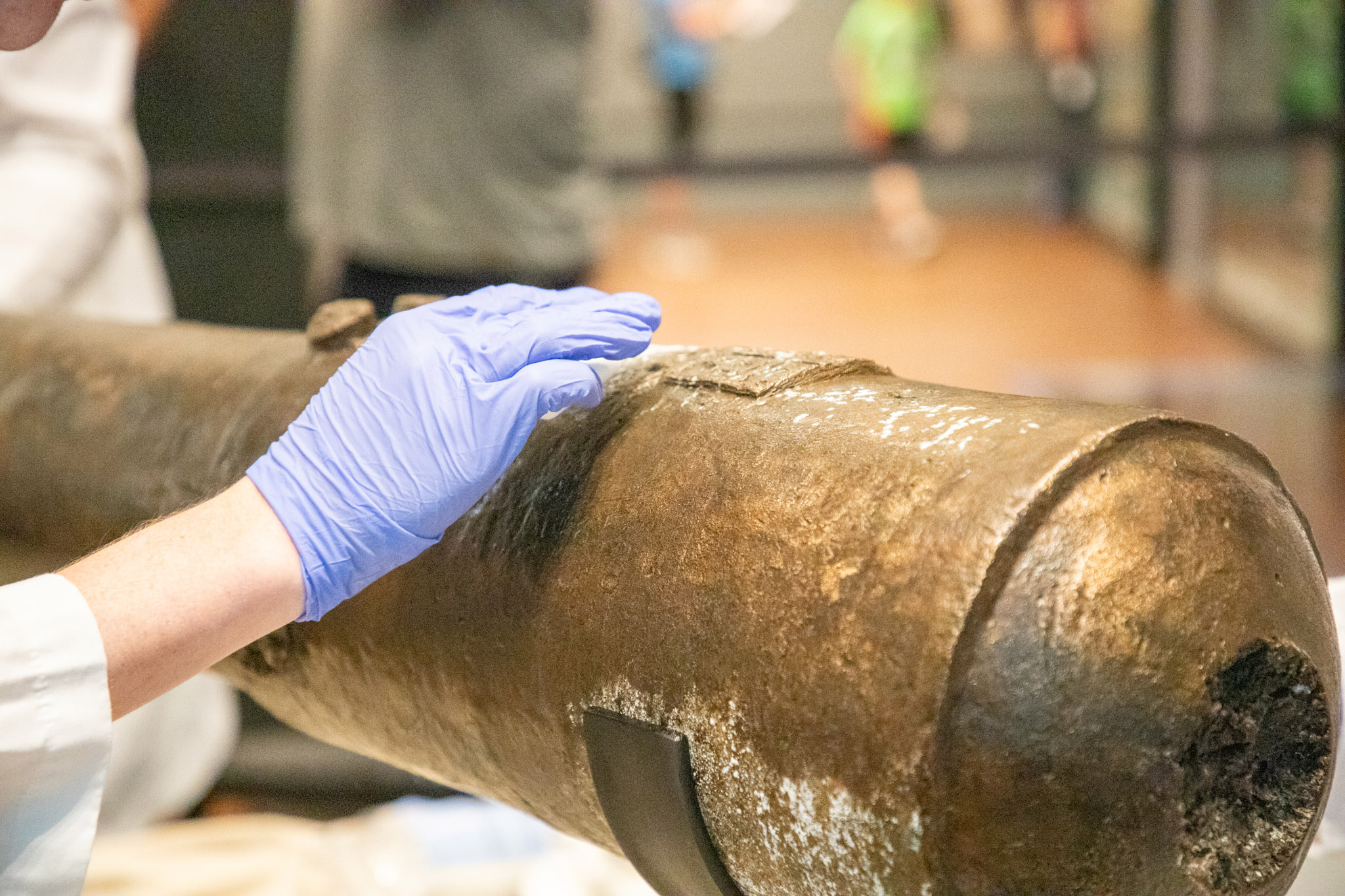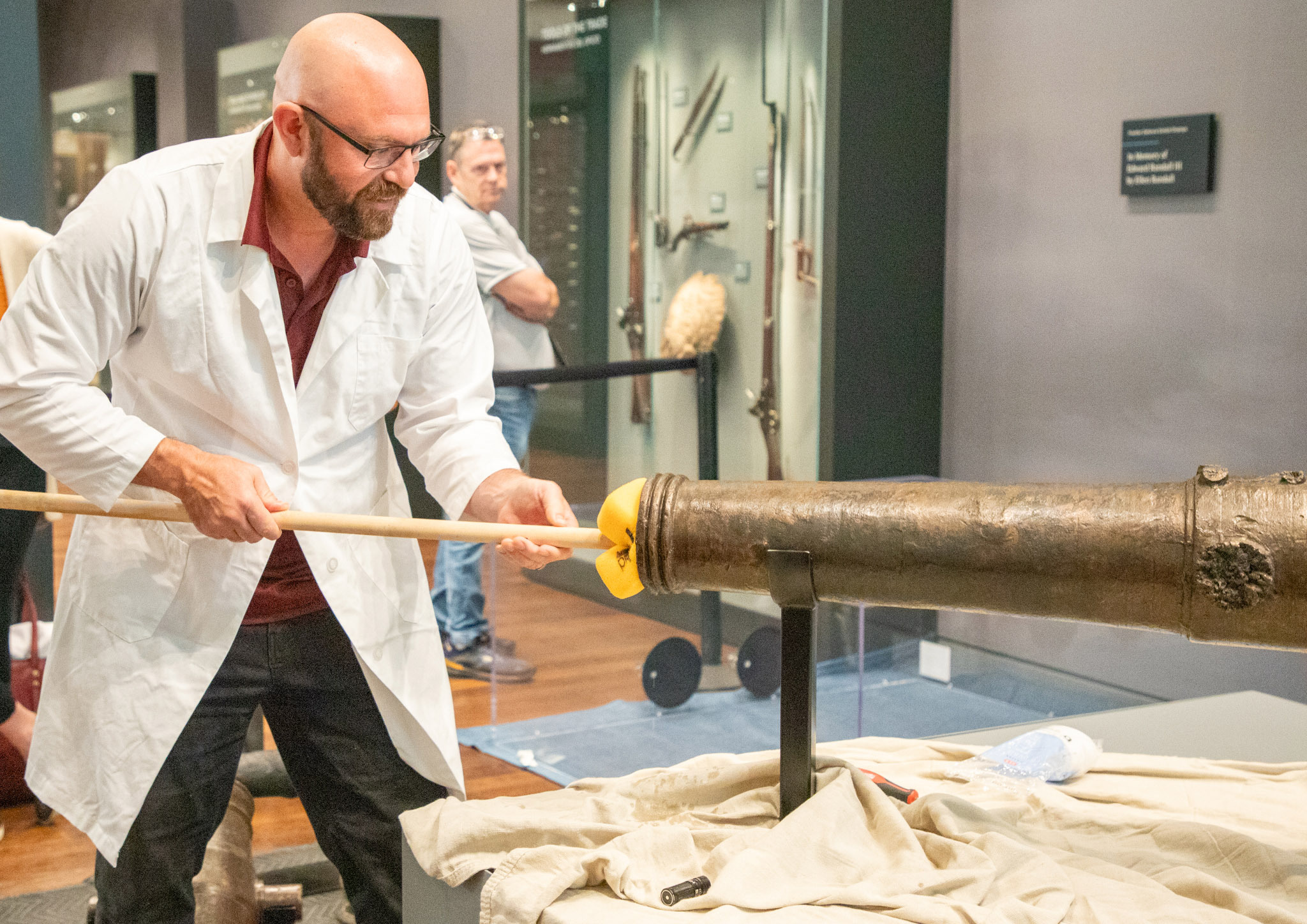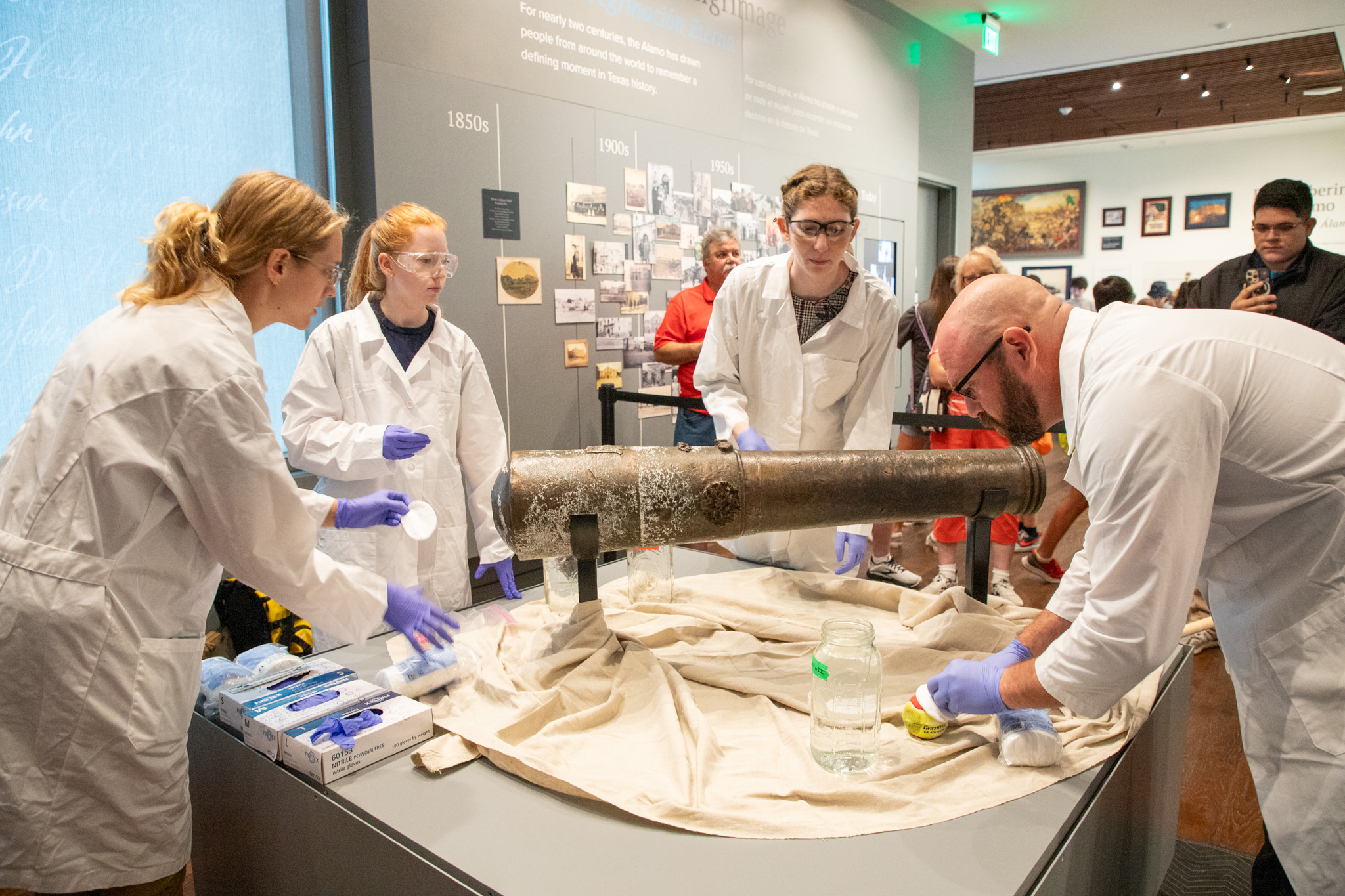
The Alamo, a symbol of Texas' rich history, is home to many artifacts from its storied past. Among these is a unique battle cannon that recently became the focus of an intense preservation effort led by experts from the Department of Anthropology at Texas A&M University.
The initiative, recently highlighted in an episode of Stories Bigger Than Texas: The Alamo Podcast, hosted by Emily Baucum, came to life when Alamo Senior Researcher and Historian Kolby Lanham approached Dr. Christopher Dostal, an assistant professor of anthropology at Texas A&M, and Kimberly Breyfogle '23, a Ph.D. student in the Nautical Archaeology Program, to collaborate on the project.
"Our lab primarily deals with material from underwater archaeological sites, and because so many things that are underwater happen to be ships, we deal with a lot of cannons,” said Dostal, a former submarine sailor in the U.S. Navy who also serves as director of the Conservation Research Laboratory at Texas A&M. “It was a natural fit for us to help out with the Alamo project."

The cannon in question, a bronze four-pounder cast in Mexico, was used in several key battles during its lifetime — including the Battle of Medina in 1813 and the Battle of Concepción in 1835 — and ultimately saw action during the Battle of the Alamo on March 6, 1836. However, this artifact has recently faced a unique challenge: a white, chalky substance growing on its surface, a phenomenon that had not been observed in other bronze cannons.
"We've spent the better part of a year and a half trying to work out why this substance is growing," Dostal revealed. "It turns out, this might be a byproduct of the chemicals used in the cannon's conservation process back in 2008 and again in 2019. The substance is a precipitate of these chemicals starting to crop up on the outside of the cannon."
To replicate the results, Dostal and Breyfogle created their own bronze blocks with a composition resembling that of the cannon. They then applied identical methods and treatments to these blocks.
"This is a rare occurrence, and we spent a large amount of time figuring out the exact cause,” Breyfogle said.
The breakthrough came courtesy of a dilute solution of formic acid, which effectively removed the chalky deposits that formed on the cannon’s surface without damaging the underlying metal. The team applied this solution to the cannon, using a tennis ball on a stick as their weapon of choice and watching as the white substance essentially vanished on contact.
"It was pretty cool watching their work, because almost the moment they put that formic acid onto the cannon, you could see that white substance practically disappear," Baucum said.

Preserving the cannon involved more than just cosmetic concerns. Had the substance been left unchecked, Dostal noted, it could have not only impacted how historical items are visually appreciated in museums, but also raised concerns about the substance's potential long-term effects.
“We don’t know the long-term side effects of letting the substance grow on the cannon,” Dostal said. “In this scenario, we did not want to find out through inaction."
Lanham noted that the work conducted by the Texas A&M team highlights the importance of ongoing preservation efforts at the Alamo.
"Without the stories and the artifacts, and the people that went along with those stories, we just have a building with stuff in it,” Lanham explained. “This is what brings everything full circle. It’s fantastic when a group of experts comes down and takes the time to work on something so precious to us."
Because the team's work on the cannon occurred during regular museum hours, enabling numerous school groups to observe the process, Lanham says their preservation efforts also had an invaluable educational impact, inspiring the next generation of historians and conservationists.
"You could have turned some of those kids into historians just by witnessing the A&M team's work," Lanham added.

The Texas A&M team's conservation efforts extend far beyond the Alamo. Breyfogle is currently researching acid generation in conserved materials from the 17th century shipwreck La Belle in the Bullock State history museum in Austin. Meanwhile, Dostal and his team at the Conservation Research Lab are tackling numerous projects, including work on the Revolutionary War gunboat Philadelphia, remnants of 18th century shipwrecks found in New York and Virginia, Native American canoes and even still-loaded 18th century cannons recovered from the Savannah River in Georgia. Yet, the significance of their work on the Alamo cannon remains profound.
"I think we as a people are defined by the stories we tell each other," Dostal said. "Things like the Alamo are physical evidence of those stories. It’s an incredible privilege to assist in preserving the history of the Alamo."

